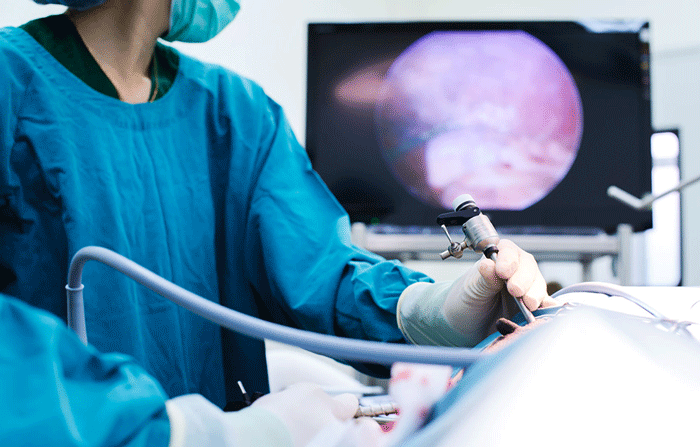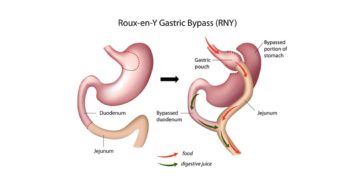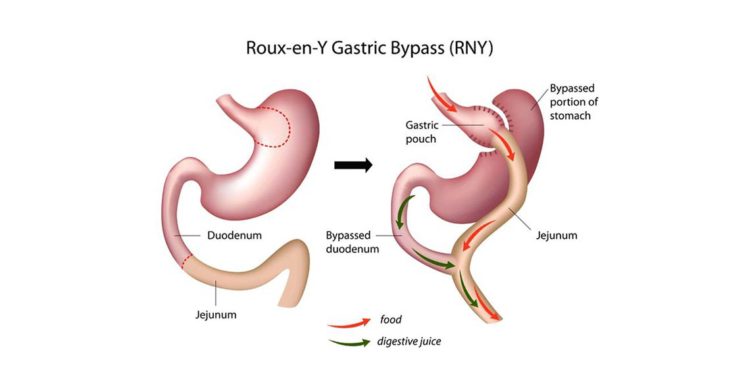Gastric bypass, or Roux-en-Y Gastric Bypass (RYGB) surgery at First Baptist Medical Center is generally performed laparoscopically: The surgeon makes only small incisions through which the surgery is performed with the aid of a special device called a laparoscope. This technique allows patients to avoid large surgical scars and recover from surgery much more quickly.*
When performing a laparoscopic gastric bypass, the surgeon creates a small stomach pouch, closing most of the stomach in order to reduce its capacity so patients will feel full after smaller meals. Next, a Y-shaped section of intestine is attached to the new stomach pouch, bypassing a portion of the intestine in order to reduce the number of calories that patients absorb. Smaller meals and less calorie absorption create the ideal conditions for massive weight loss.
RYGB restricts food intake. RYGB also decreases how food is absorbed. Food intake is limited by a small pouch that is similar in size to the pouch created with AGB. Also, sending food directly from the pouch into the small intestine affects how the digestive tract absorbs food. The food is absorbed differently because the stomach, duodenum, and upper intestine no longer have contact with food.
Read more from The National Institute of Diabetes and Digestive and Kidney Diseases, Health Information Center.
*Results may not represent typical surgical outcomes. Every surgery and each patient undergoing bariatric surgery represents unique sets of circumstances and, therefore, results will vary.






























 Your Information will never be shared with any third party.
Your Information will never be shared with any third party.